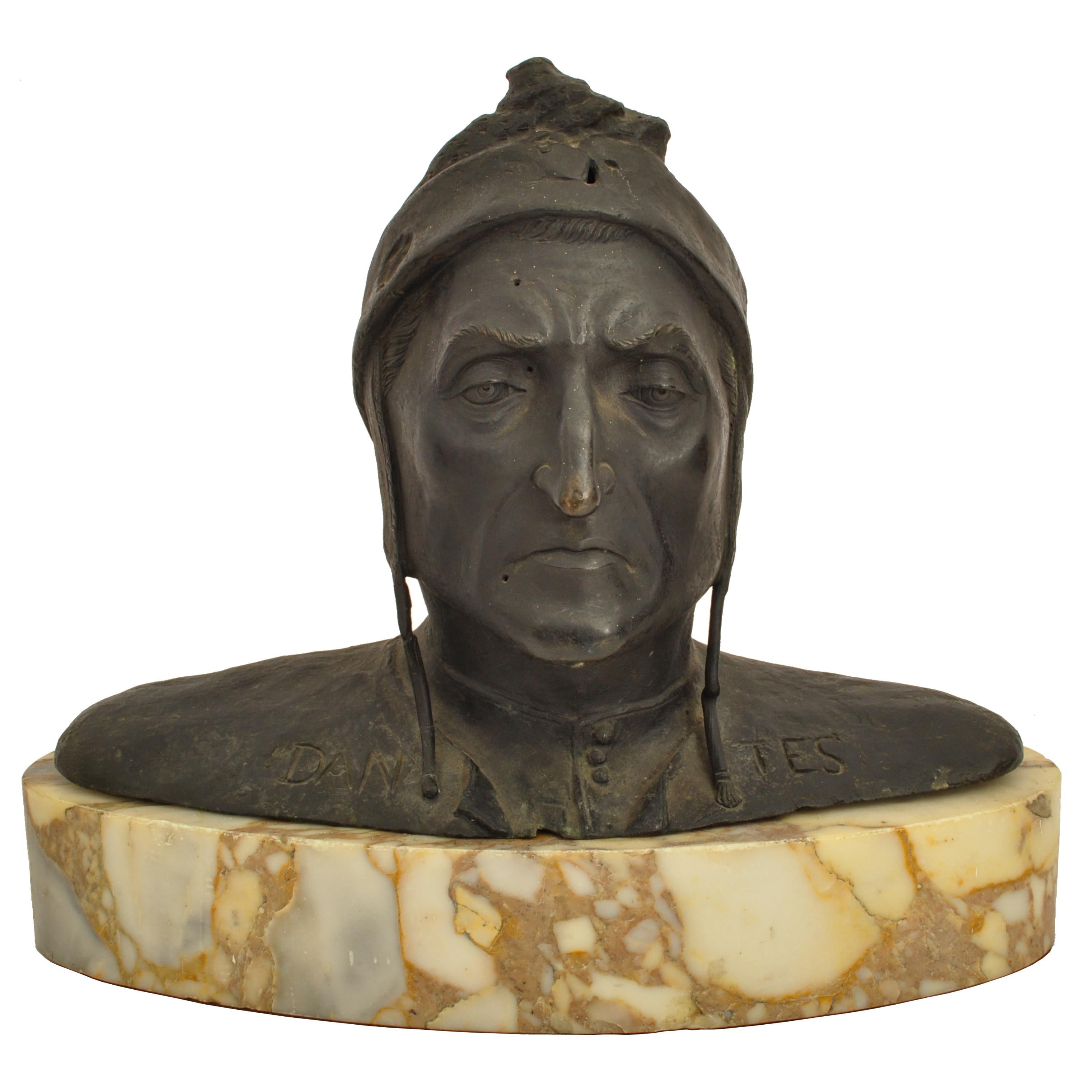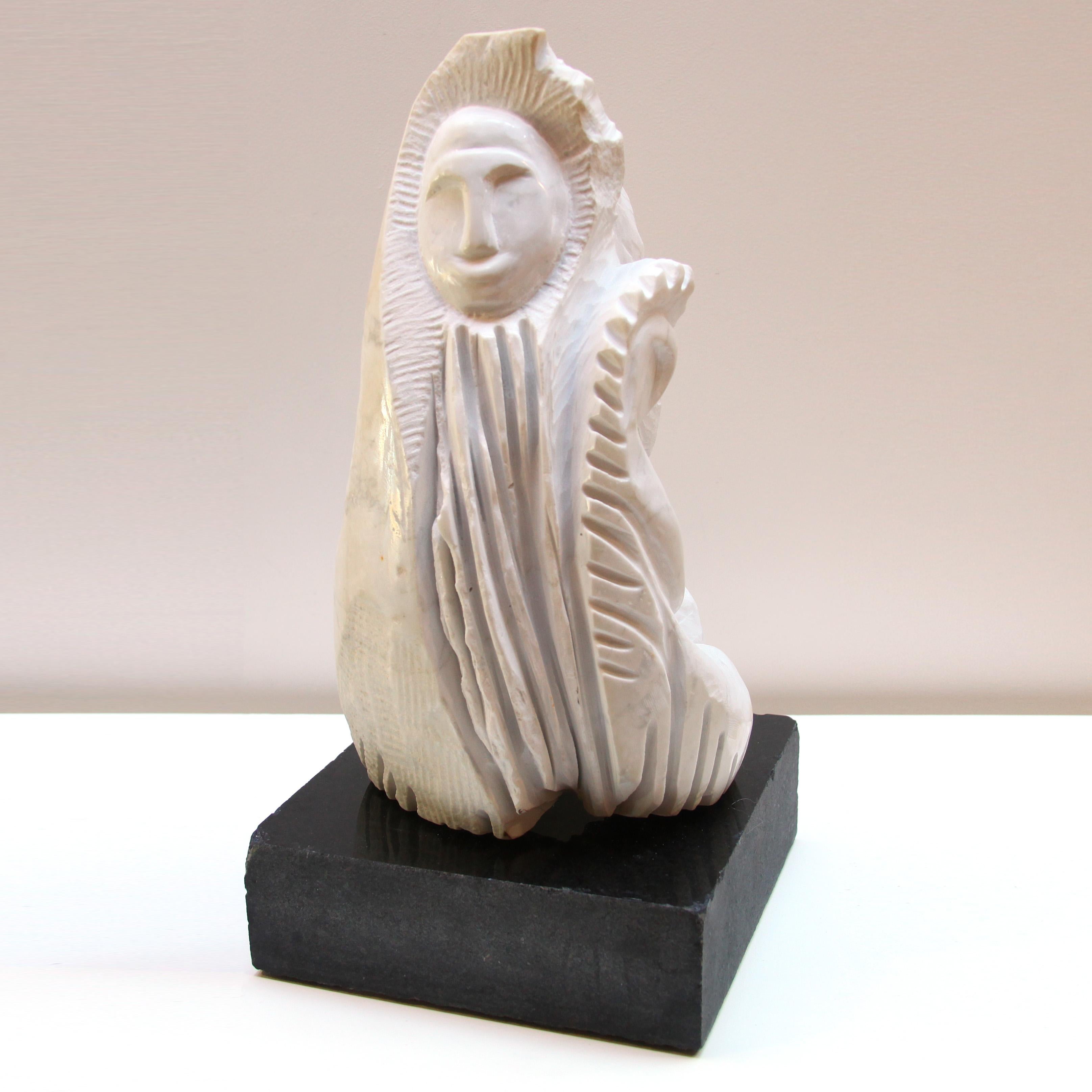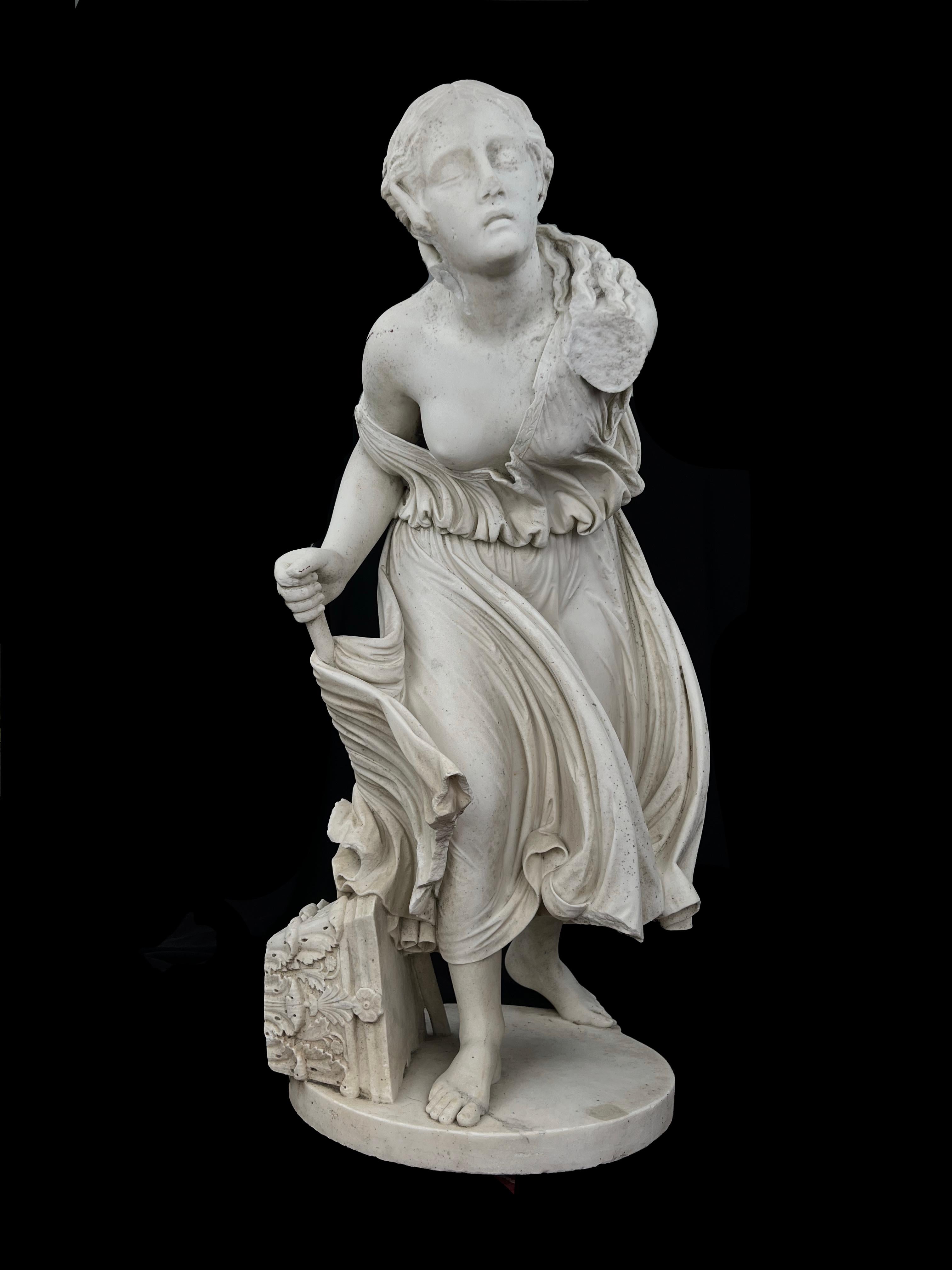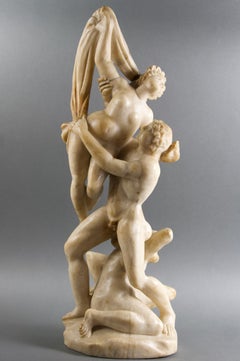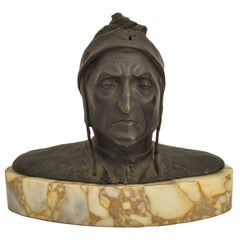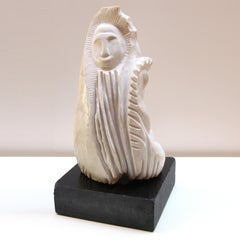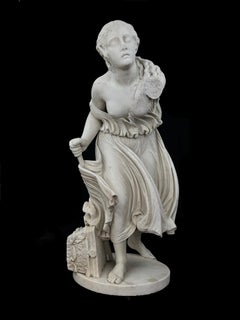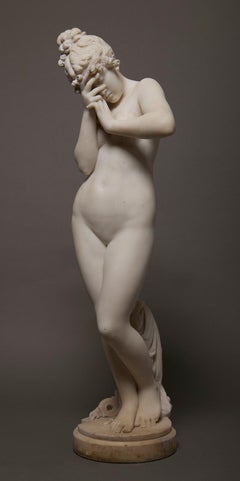Items Similar to Busto in Marmo Statuario della Venere Italica seconda metà XIX secolo Firmato
Video Loading
Want more images or videos?
Request additional images or videos from the seller
1 of 17
Antonio FrilliBusto in Marmo Statuario della Venere Italica seconda metà XIX secolo Firmatocirca 1870
circa 1870
$7,620.52
£5,679.64
€6,500
CA$10,489.93
A$11,901.05
CHF 6,231.80
MX$146,827.18
NOK 77,273.09
SEK 73,935.52
DKK 49,453.58
Shipping
Retrieving quote...The 1stDibs Promise:
Authenticity Guarantee,
Money-Back Guarantee,
24-Hour Cancellation
About the Item
Busto in marmo bianco statuario della Venere Italica firmato Antonio Frilli - Florence, Italia, seconda metà del 19 secolo. Misure H tot cm 50 H busto cm 39 L cm 30 P cm 24 Questo busto a grandezza naturale esprime tutta la capacità e la maestria dello scultore Antonio Frilli. Opera di difficile esecuzione data la particolare torsione della testa che ne altera tutte le proporzioni, Frilli ha saputo eseguirla egregiamente, in maniera proporzionata ed elegante, il che la rende superba da ogni punto di vista. Anche la sua storia è affascinante: opera dello scultore Antonio Canova, è ispirato alla celebre statua marmorea che si trova nella Galleria Palatina di Palazzo Pitti a Firenze. Quest'opera fu commissionata per sostituire la Venere de' Medici, trasferita a Parigi da Napoleone. Il busto, una splendida riproduzione del torso della Venere Italica, è un esempio di arte neoclassica, con particolare attenzione alla resa dei dettagli, come i capelli e l'eleganza del viso. La Venere Italica, realizzata tra il 1804 e il 1812, è un'opera che Canova concepì come una sorta di reinvenzione del soggetto della Venere de' Medici. L'artista, infatti, non si limitò a una mera copia, ma cercò di cogliere l'essenza della bellezza ideale e della grazia femminile, tipiche dello stile neoclassico. Il busto, in particolare, esalta la morbidezza della pelle e la delicatezza dei tratti del viso, rendendo omaggio alla bellezza classica con un tocco di modernità. Antonio Frilli è stato un abile scultore fiorentino e professore presso l’Accademia di Belle Arti di Firenze. Aprì il suo laboratorio in città in via dei Fossi, nel 1860, dove ancora ha sede la Galleria Frilli. Lì iniziò a lavorare assieme a pochi assistenti a sculture in marmo di Carrara per prestigiose committenze private. In pochi anni la raffinatezza delle sue opere lo resero celebre in tutto il continente europeo ed ebbe modo di proporre i suoi capolavori a saloni internazionali in Australia e negli Stati Uniti. Ben presto raggiunse eccellenti risultati divenendo uno degli scultori più ambiti del suo tempo. Fu presente all'Esposizione Centennale di Philadelphia del 1876; nel 1881 le sue statue e i suoi arredi da giardino furono esibiti nel padiglione italiano a Melbourne in Australia. Nel 1904, due anni dopo la morte di Frilli, suo figlio Umberto partecipò alla Louisiana Purchase Exposition a St. Louis nel Missouri, dove uno dei lavori del padre, una scultura raffigurante una donna su un'amaca (Nude Sleeping in a Hammock) realizzata in marmo bianco di Carrara, vinse il Grand Prize e sei medaglie d'oro. Nel 1999, lo stesso pezzo fu venduto da Sotheby's con un'asta stimata $800,000.
- Creator:Antonio Frilli (1850 - 1920)
- Creation Year:circa 1870
- Dimensions:Height: 19.69 in (50 cm)Width: 11.82 in (30 cm)Depth: 9.45 in (24 cm)
- Medium:
- Movement & Style:
- Period:
- Condition:Il busto non ha mai subìto restauri. Eccellenti condizioni. Poggia su una base in marmo bianco di Carrara. Viene spedito in cassa di legno su misura su pallet con assicurazione sul valore.
- Gallery Location:Pistoia, IT
- Reference Number:1stDibs: LU2746216510092
About the Seller
4.5
Gold Seller
Premium sellers maintaining a 4.3+ rating and 24-hour response times
Established in 1997
1stDibs seller since 2024
13 sales on 1stDibs
- ShippingRetrieving quote...Shipping from: PISTOIA, Italy
- Return Policy
Authenticity Guarantee
In the unlikely event there’s an issue with an item’s authenticity, contact us within 1 year for a full refund. DetailsMoney-Back Guarantee
If your item is not as described, is damaged in transit, or does not arrive, contact us within 7 days for a full refund. Details24-Hour Cancellation
You have a 24-hour grace period in which to reconsider your purchase, with no questions asked.Vetted Professional Sellers
Our world-class sellers must adhere to strict standards for service and quality, maintaining the integrity of our listings.Price-Match Guarantee
If you find that a seller listed the same item for a lower price elsewhere, we’ll match it.Trusted Global Delivery
Our best-in-class carrier network provides specialized shipping options worldwide, including custom delivery.More From This Seller
View AllLarge Neoclassical White Marble Sculpture Venus Italica mid-19th century
Located in Pistoia, IT
Venus Italica, imposing sculpture in white Carrara marble, mid-nineteenth-century Roman atelier.
Antonio Canova made several sculptures depicting Venus. The first was made as compen...
Category
Mid-19th Century Italian School Figurative Sculptures
Materials
Marble
Venus Colca Neoclassical Marble Sculpture early 19th century
Located in Pistoia, IT
Crouching Venus, neoclassical Carrara marble sculpture, early 19th century.
An 18th-century English tourist to Florence wrote that of all the Venuses in the Uffizi, "only one grace...
Category
Early 19th Century Italian School Figurative Sculptures
Materials
Marble
"La Danza", Grande scultura in Marmo bianco di Carrara XIX secolo
By Antonio Giovanni Lanzirotti
Located in Pistoia, IT
Antonio-Giovanni Lanzirotti, "La Danza", grande scultura in marmo bianco di Carrara, firmata AG Lanzirotti sulla base.
Antonio Giovanni Lanzirotti, nato a Palermo il 9 maggio 1839 e...
Category
1860s Italian School Figurative Sculptures
Materials
Marble
Italian Neoclassical Sculptural Group in Alabaster "The Rape of the Sabine Women" 18th
Located in Pistoia, IT
"The Rape of the Sabine Women," veined alabaster, large sculptural group with classical subject, Volterra manufacture, 18th century.
The so-called Rape of the Sabine Women is a scu...
Category
1790s Italian School Figurative Sculptures
Materials
Alabaster
"The Rape of Sabina" Large Bronze Sculpture Bottega Romana Grand Tour
By Francesco Righetti
Located in Pistoia, IT
"The Rape of Sabina," large bronze group with brown patina, Roman workshop of the second half of the 18th century, circle of Francesco Righetti (Rome 1749-1819).
The exceptional qu...
Category
Late 18th Century Italian School Figurative Sculptures
Materials
Bronze
Polychrome Stucco Head Sketch Cast Fragment 19th century
Located in Pistoia, IT
Large stucco head with traces of polychromy, Italy, 19th century.
It could be a cast of a museum sculpture made during the 19th century or a plaster sketch of a work. In any case,...
Category
19th Century Italian School Figurative Sculptures
Materials
Chalk
You May Also Like
Antique Italian Grand Tour Bronze Marble Bust Sculpture Dante Alighieri 1880
Located in Portland, OR
A good antique Italian Grand Tour Bronze and marble bust of Dante Alighieri, circa 1880.
The bronze is most likely Florentine and mod...
Category
Late 19th Century Italian School Figurative Sculptures
Materials
Marble, Bronze
Figurative Marble Sculpture, "Kindred"
By TONY GANGITANO
Located in San Diego, CA
This is a one of a kind Italian white Carerra marble sculpture by San Diego artist Tony Gangitano. Its dimensions are 10" x 25" x 10". It is on a black granite base. A certificate of authenticity will follow delivery.
This sculpture is a representation of Mary and Christ...
Category
2010s Italian School Figurative Sculptures
Materials
Granite, Marble
NYDIA, THE BLIND FLOWER GIRL OF POMPEII Marble Sculpture 1856-1870
Located in Soquel, CA
Randolph John Rogers (American, 1825 - 1892) Randolph Rogers' Nydia, the Blind Flower Girl of Pompeii debuted in 1856 to critical and public acclaim, solidifying Rogers’ position as a pre-eminent American sculptor and it remains one of the artist’s most celebrated works today. The subject of Nydia is drawn from Edward Bulwer-Lytton's The Last Days of Pompeii 1834. After touring the ruins of the ancient city in 1833, and inspired by the stories of blinding volcanic ash, he composed the tale of Nydia, a slave who led her master, Glaucus, to safety. Rogers depicts Nydia at the moment that she and Glaucus have become separated in their perilous journey through the rubble and Nydia seeks familiarity in the surrounding chaos, her distress evident in her pained expression. The grace of the sculpture is at odds with the turmoil portrayed; a toppled Corinthian capital lies at her feet and obstructs her next step, indicated by the tilt of her back foot and grip on her walking stick. Examples of this model can be found in major American collections, including The Metropolitan Museum of Art, the Art Institute of Chicago, the Detroit Institute of Arts, the Los Angeles County Museum of Art, and the Museum of Fine Arts, Boston.
Literature, Millard F Rogers, Jr. Randolph Rogers, American Sculptor in Rome. University of Massachusetts Press, 1971, American Figurative Sculpture in the Museum of Fine Arts Boston. Museum of Fine Arts, Boston, 1986. Joyce K Schiller. "Nydia, A Forgotten Icon of the Nineteenth Century." Bulletin of the Detroit Institute of Arts,
Born in Waterloo, New York, Randolph John Rogers became an expatriate* sculptor of idealized figures, portraits, and commemorative works in Neo-Classical* and Realist* styles. He worked in clay, plaster, marble and bronze, and lived both in Italy and the United States. He made 167 examples of Nydia in two sizes (varies depending on base height) 36" and 54'.
Rogers was raised in Ann Arbor, Michigan, and as a young man did woodcuts* for the local newspaper, The Michigan Argus, and also worked as a baker's assistant and a dry goods clerk. In 1847, he moved to New York City, where he hoped to find work as an engraver*, but failing to do so, worked in a dry goods store owned by John Steward...
Category
1850s Italian School Figurative Sculptures
Materials
Marble
$12,000 Sale Price
20% Off
Frine (Phryne), 19th Century Large Marble Sculpture of Nude Woman
Located in Beachwood, OH
Ercole Rosa (Italian, 1846 - 1893)
Frine (Phryne)
Marble
Signed 'E. Rosa, Studio O. Andreoni, Roma' on back
34.5 x 12 x 10 inches
80 lb.
Phryne was a 4th century BC famous Greek ...
Category
19th Century Italian School Figurative Sculptures
Materials
Marble
Pair of Italian "Alabaster Stone Lions" after Antonio Canova; Mid 19th Century
Located in SANTA FE, NM
"Pair Recumbent Stone Lions"
after Antonio Canova (1757-1822)
Italian (possibly Florence)
Mid 19th Century
Alabaster, marble
6 x 9 x 4 inches
This is an exquisite pair of Italian alabaster lions on marble bases based on the monumental lions carved by Antonio Canova (1757-1822), the greatest Italian neoclassical sculptor. Canova sculpted the marble lions for the monumental tomb of Pope Clement XIII in St. Peter’s, Rome in 1792
Canova Lions refers to the pair of copies of lion sculptures by Antonio Canova. When Canova created the sculptures in 1792, he installed them on the tomb of Pope Clement XIII. The marble sculptures are some of the most prominent features in St. Peter's Basilica in Rome. Given the intricacies of creating the original Canova lions, some artists created molds and replicated them. A good example is the pair of lion sculptures...
Category
1850s Italian School Figurative Sculptures
Materials
Marble, Alabaster
$4,624 Sale Price
20% Off
"Violante Beatrice of Bavaria"
Located in Astoria, NY
Aristide Petrilli (Italian, 1868-1930) "Violante Beatrice of Bavaria" Alabaster Bust, late 19th century, the bust on an angular plinth, signed and titled. 17" H x 16" W x 7" D.
Category
Late 19th Century Italian School Figurative Sculptures
Materials
Alabaster
